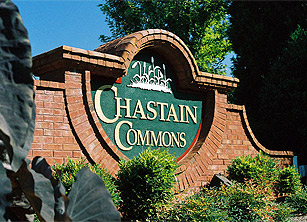Crape Myrtles are abundant in Atlanta landscapes and across the Southeast. They are a very traditional plant/small tree for southern gardens. They have a lot of positive attributes starting with the most obvious; flowering most of the summer, a very interesting bark that exfoliates, nice fall color, and an upright habit that allows it to be used in many different applications. They come in many different colors from white to red to purple. This time of year is when the age-old debate begins—-”to prune or not to prune” the Crape Myrtles. There are 2 basic ways to manage your Crapes. Many people prune off all of the previous year’s growth and force the plant to produce new shoots in Spring to flower on. Others prefer to leave the tree alone and not to prune the tops at all, just pruning the suckers/shoots of the trunk and from the root area. Both ways are acceptable.
How do you decide which way to manage your Crape? The answer is most likely to be found in the placement of the specific tree(s) in question. For example: If your tree is in a residential setting, you may want to prune it every year to keep the tree from getting to large for the space/yard. Crapes can get 30′ tall and 20′ wide if left alone. This may be too large for some areas in your yard. If it is in front of the house it could block the view of the house and this may be undesireable. Pruning it every year keeps these problems at bay. On the other hand, if you have a large area you may want to leave it alone. They grow into beautiful, full, vase-shaped trees. Also by not pruning you avoid the “knuckling” effect. This occurs when the tree is pruned at the same place on the limb every year. Roundish “knuckles” develop as the tree attempts to heal from the cut and these can be unsightly. An unpruned, or natural growing Crape Myrtle, is a beautiful tree. You see these frequently in Charleston, SC, Savannah, GA, and other southern cities. Around Atlanta, it seems popular for the maintenance companies to prune the Crapes. This does produce a very manicured look and even a sculpturistic appearance when pruned properly.
So, in summary, prune your Crapes or not, either way is correct. Decide the look you wish to obtain and let that be what dictates how you manage your Crapes. Happy Landscaping!
If you would like a FREE CONSULTATION, call us at 770-569-5900.


I have a multi-trunk crepe in my yard that I prune every other year so I can get a big nice canopy on it and I feel by pruning it bi-yearly, I can still get a big canopy and also can allow air flow to get through the canopy and keep the crepe happy and not overgrown.